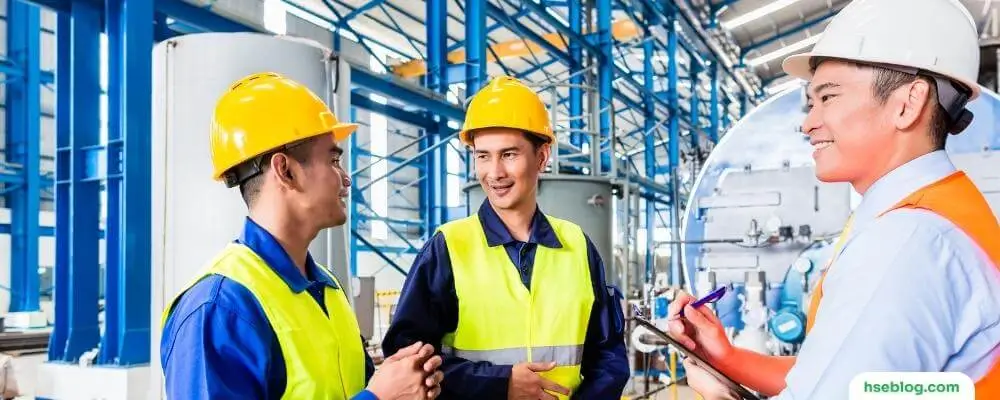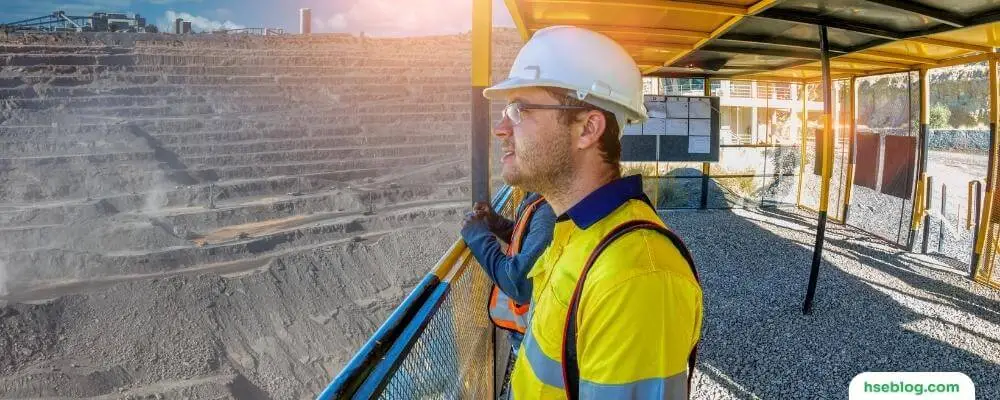Understanding the complexities of workplace safety requires a deep dive into the roles and responsibilities of key personnel, among which the Safety Supervisor stands as a pivotal figure. In the complex web of workplace dynamics, these professionals are responsible for maintaining and enhancing safety standards and orchestrating a safer, healthier environment for everyone involved.
In this blog, we unpack the multi-faceted roles and responsibilities of Safety Supervisors, providing a comprehensive guide to their significant contribution to workplace safety. From enforcing safety procedures, conducting regular inspections, training employees, and managing emergencies, we will explore how Safety Supervisors shape and uphold the culture of safety within an organization. Join us as we navigate the crucial elements that make the Safety Supervisor indispensable to any workforce.
Safety Supervisors
A Safety Supervisor is a professional primarily responsible for ensuring the safety of employees in the workplace. They play a critical role in establishing, maintaining, and improving health and safety protocols within an organization. Their work involves various tasks, including training employees, conducting regular safety inspections, enforcing safety guidelines, and addressing potential safety issues.
Safety supervisors need a broad set of skills, including keen observational skills to identify potential hazards, communication skills to effectively convey safety procedures and protocols to employees, and problem-solving abilities to resolve safety concerns. They also need to know their industry’s specific safety requirements and standards.
Education and training requirements for safety supervisors can vary based on the specific industry. Still, they often include relevant safety certifications, a background in occupational health, or even a degree in safety management. Regardless of the specific credentials, a comprehensive understanding of safety practices and regulations and the ability to implement them effectively are essential for a safety supervisor.

Roles and Responsibilities Of Safety Supervisors
Safety supervisors hold a critical role in any organization, with primary responsibilities centered around ensuring the health and safety of all team members. This vital position requires supervisors to directly report to their respective departmental managers, carrying out various tasks and responsibilities. Here are some important roles and responsibilities of safety supervisors:
1. Accountability for Health and Safety Performance
Safety supervisors are responsible for upholding and improving their team’s safety performance. This means ensuring that all safety standards and guidelines are followed consistently. They must monitor team activities, ensuring that health and safety regulations are understood and adhered to, thereby minimizing accidents and enhancing workplace safety.
2. Conduct Health and Safety Meetings
Regular meetings are crucial to maintaining open communication about health and safety matters. These meetings serve as a platform to discuss any safety concerns, provide safety updates, share best practices, and promote a culture of safety awareness. They also offer supervisors the chance to receive employee feedback and suggestions, fostering collaborative problem-solving.
3. Enforce Safe Work Procedures
Safe systems of work are the backbone of workplace safety. Supervisors must ensure these procedures are implemented and adhered to at all times. They should monitor and correct deviations, promoting a culture prioritizing safety over convenience or speed.
4. Identify and Report System Weaknesses
Safety supervisors should be vigilant in identifying potential vulnerabilities within safety systems. This involves critically analyzing procedures, conducting regular risk assessments, and observing workplace operations. If a weakness is identified, they must promptly report it to the Departmental Manager, offering suggestions for improvements or revisions.
5. Handle Jobs Outside Current Safety Procedures
In the dynamic nature of work environments, there may be tasks not covered by existing safety procedures. Safety supervisors must identify these situations and notify the Departmental Manager, facilitating the development of appropriate safety guidelines for such tasks.

6. Address Unsafe Acts and Conditions
Supervisors are responsible for maintaining a safe work environment. They must routinely inspect the workplace, identify unsafe actions or conditions, and take immediate corrective action. Should an issue be beyond their authority or ability to rectify, they must escalate it to the Departmental Manager.
7. Provide Health and Safety Instruction
Training employees in health and safety protocols is a key responsibility of safety supervisors. They must ensure employees understand and follow these guidelines to protect themselves and their coworkers. Training should be ongoing and adaptable, reflecting safety guidelines, equipment, and work procedure changes. Supervisors should document each training session for future reference and compliance checks.
8. Conduct Daily Inspections
Regular inspections of the workplace help identify potential hazards before they cause accidents. Supervisors should thoroughly inspect assigned work areas daily, addressing minor issues immediately and escalating major issues to the Departmental Manager.
9. Oversee Equipment and Tool Safety
Safety supervisors must ensure that all tools and equipment are safe for use. They should instruct employees to inspect their tools before each use, mitigating the risk of accidents due to faulty equipment. Regular spot checks should also be carried out to verify compliance and detect any overlooked issues.
10. Induct New Employees
Safety supervisors are critical in introducing new hires to the organization’s safety culture. They should personally instruct each new employee about health and safety requirements specific to their role and work area, ensuring they understand their responsibilities towards maintaining a safe workplace.

11. Provide On-the-Job Safety Training
Practical, hands-on safety training is essential for employees to understand and apply safety protocols. Supervisors should provide real-time feedback and instruction during tasks, reinforcing safe practices and promptly correcting unsafe behavior.
12. Monitor Employee Health
Employees’ health can directly impact workplace safety. Supervisors should watch for signs of physical or mental health issues, such as fatigue or stress, that could impair an employee’s ability to work safely. Any concerns should be reported to the Departmental Manager, respecting the privacy and dignity of the employee.
13. Enforce PPE Usage
Personal Protective Equipment (PPE) is often a critical defense against workplace hazards. Supervisors must enforce PPE requirements, conduct regular checks to ensure proper usage, and maintain records of policy violations. They should also assess the condition of PPE regularly, ensuring it provides adequate protection.
14. Handle Serious Injuries and Incidents
Safety supervisors are critical in managing the situation when serious injuries or dangerous incidents occur. They must ensure immediate medical attention for injured personnel, secure the incident area, and report the incident to the Departmental Manager. They should also document the incident accurately and thoroughly for future analysis and prevention measures.
15. Investigate Accidents
Post-incident investigations help prevent future occurrences by identifying the root cause. Supervisors are responsible for conducting these investigations, documenting their findings, and submitting a detailed report to the Departmental Manager, including recommended preventive measures.

Additional Roles and Responsibilities Of Safety Supervisors
In addition to the responsibilities already discussed, Safety Supervisors may also be tasked with the following duties:
- Check for Operational Changes: Work environments can change rapidly, and safety supervisors must stay ahead. At the start of each shift, they should check for changes in work procedures, equipment, or other conditions that could impact health and safety.
- Monitor Attendance: Keeping track of who is in the workplace can be vital for safety and security. Supervisors should monitor and report any unexpected absences, ensuring staff levels are maintained for safe operations.
- Conduct Daily Spot Checks: Regular spot checks help maintain consistent adherence to safety practices. Supervisors should conduct these checks daily, promptly addressing violations and correcting unsafe practices or conditions.
- Participate in Safety Training: Supervisors should regularly participate in safety training to stay updated on best practices and regulatory changes. This continued learning allows them to effectively guide their team and foster a proactive safety culture.
- Address Health and Safety Concerns: Supervisors should act as a point of contact for any health and safety concerns employees raise. They should take all complaints and suggestions seriously, addressing them promptly and fostering a culture that encourages open communication about safety.
- Maintain Safety Signs and Boards: Safety signage provides critical information and guidance for maintaining a safe work environment. Supervisors should ensure these signs are well-maintained, visible, and legible, promptly replacing outdated or damaged ones.
Conclusion
In conclusion, Safety Supervisors play a vital role in protecting the health and well-being of employees across all industries. They ensure that the workplace remains safe by enforcing safe work procedures, conducting regular inspections, providing safety training, and promptly addressing safety issues. Their proactive efforts in identifying and mitigating hazards, consistent monitoring, and adherence to safety regulations are invaluable in cultivating a safety-conscious culture within the organization. Understanding their roles and responsibilities is a step forward in appreciating their pivotal role in keeping our workplaces safe and secure.

